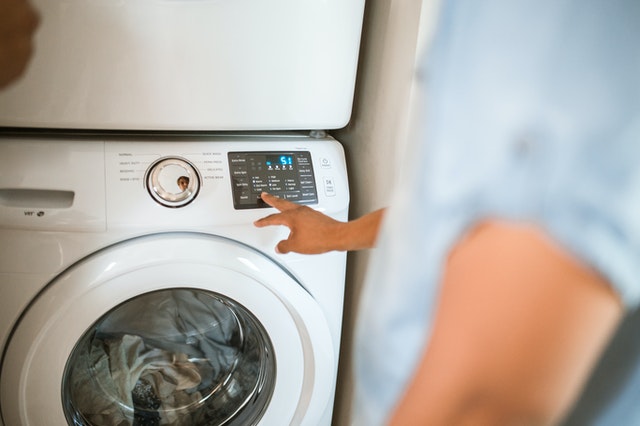When it comes to washing machines, breaking down can happen at any time. Whether it is a front-load or top-load machine, it can cause headaches and mess up your entire day. If your washing machine suddenly stops and it’s spinning and draining stop working, it will cause a mess of clothes to pile up. It will also cause you to worry about how long it will take to get it fixed. The next thing you know, it is time to figure out how much it will cost to hire a repairer to resolve the issue.
While it may seem like an easy chore, most people enjoy doing laundry using a washing machine. It will save us a lot of time and help us get rid of dirty clothes. Have you ever checked your washing machine and found a load of clothes that are sopping wet? If this is the scenario, then it is most likely that a faulty washing machine causes the issue, and it could be the result of a malfunction. This article teaches how to fix this issue and get your clothes washer back to its original state.
If your washing machine suddenly stops spinning, there are a few non-technical things that you can do to get it back on track.
Overloaded Washing Machine
Problem: This issue occurs when the clothes are loaded unevenly onto a top-loading machine instead of spreading them all around inside. It automatically shuts down once it senses that the load is over the capacity.
Not everyone enjoys doing laundry as much as most people do. This is why many people try to compensate by stuffing a large number of clothes into the machine at once. This method works for people who are lazy or unwilling to put away their excess clothes. They can then get rid of the wet stuff by running it through the washer, resulting in a washing machine that does not spin.
How to fix it: To maintain a balanced load, turn off the machine and re-establish the proper distribution of the load. Once the lid has been closed, the spinning should resume.
Drain Trap Clogged
Problem: A clogged or blocked drain trap might possibly be a non-mechanical issue that can stop a front-load washing machine from spinning; it can also cause a machine to stop working. Aside from the clothes, usually, small items or things left inside the machine’s basket or are accidentally picked up along with the laundry might get stuck or blocked the drain trap.
Although different models have different functions, Most models have a drain trap door that is located on the bottom part of the machine. The exact process works for most of them. Just pull out the cutout section and access the drain trap. Make sure to keep a lid on the bottom part of the trap to catch any liquid.
How to fix it: After the water has drained, remove any debris or dirt that might have got stuck in the drain. Once the entire process is complete, replace the entire machine’s lint trap and secure it by turning it clockwise. After that, you can now resume the spinning cycle.
The Load Is Not Balanced
Problem: If the wash load is too heavy, it can cause your spin cycle to malfunction. This is usually the result if you’re trying to clean a variety of heavy items, such as a comforter or a bath sheet.
How to fix: This fix works for most loaders: Open the machine, wait for it to unlock automatically, and then manually shift the contents around and distribute them evenly.
The Washer Itself Is Not Balanced
Problem: Another issue could be caused by the positioning of the washing machine itself. Since it makes the machine vibrating in the room inside incredibly loud and clear, it often causes a spin cycle issue.
How to fix: If you ever encounter this issue, the only thing you need to do is balance the washing machine’s feet. You can either adjust the washer’s leg or put some item that will make it evenly stand.
The Lid Switch Is Malfunctioning
Problem: Top loading machines have a lid switch that is designed to prevent the machine from spinning if the lid is not properly closed. This feature is similar to the door lock system used for older models. If the lid switch stops working properly, your washing machine will not spin.
How to fix: The bottom portion of the lid has a small protrusion that activates a switch when you close it. If it gets bent out of shape, try bending it back to avoid making contact. Before closing the lid, make sure that it is closed tightly and that the switch is activated. If it still does not work, contact a service technician to get a new lid switch.
Washer Door is Locked
Problem: This feature is usually included in newer models of front-loading washing machines. When activated, it prevents the door from closing mid-cycle. It also launches a signal to the control system to allow the machine to perform its spin cycle. If the door lock or strike is not working, a digital error code will be displayed, and the machine will stop spinning.
How to fix: To properly assess the issue, you have to contact a repair professional to replace the door lock immediately.
Other Reasons Why Your Washer Stops Spinning
Although most washing machines are prone to spin failure, other issues can also cause problems. Aside from the usual ones, some of these can also be caused by faulty components.
Drive Belt
Problem: An excessively worn-out drive belt can also prevent the washer from spinning. Aside from calling a maintenance specialist for a replacement, you can also try to troubleshoot it yourself. You can do this process by listening to the sounds of the belt moving or whining to diagnose the issue. It saves you time while avoiding an expert visit that may cost you a lot. However, If you do not have knowledge about all of that, calling a repair professional is a must.
How to fix: When it comes to servicing a drive belt, the repair professional will check the condition of the pulley motor and the belt tension to ensure that it is working properly. Also, it is imperative to note that the belt should be replaced with a new one that is covered under a proper warranty.
Direct Drive Motor Coupling
If the name of this component suggests that it needs to be repaired, then it is likely that you should contact a maintenance specialist instead. The direct-drive motor coupling serves as a transfer of power between a motor and the transmission. As it gets worn, it will eventually fail to engage the forks. Even when your washing machine is just fine, your drive motor can still cause problems with the spin cycle.
Clutch Assembly
A clutch assembly is commonly used on top-load washers to prevent the transmission from moving backward when the spin cycle is initiated. This component can eventually wear and scrape while the machine is in use. This can cause the transmission to stall or even stop working altogether. Other symptoms of this issue include a burning smell and a loud noise.
How to fix: This is not a project that most of us can easily do ourselves. You will need to hire an expert or professional to do it correctly so that it will not get worse.
Frequently Asked Questions
Why does a washing machine full of water suddenly stop?
It is possible that your washing machine has a clogged drain hose or that its pump is acting strangely. It can also be that the lid switch has been broken. Before the issue can be fixed, the water should be drained from the machine, and call an expert to do it.
How to know if my washing machine is clogged?
Watch as the water goes into the washing machine’s standpipe. If the water goes back up and out of the standpipe, it is most likely a clog in the drain. Also, it is essential to know that the amount of time it takes for the water to drain and fill the standpipe helps identify the issue.
How to remove the clogged On my washing machine?
To remove the clogged from a drain. Pour a bucket full of boiling water and baking soda into the drain carefully. After that, wait a few minutes before draining the water. If it still does not drain after a few minutes, try draining it using a funnel.
Conclusion
If your washing machine does not spin completely, or if it suddenly stops mid-spin-cycle, it is time to perform a follow-up check. This will involve opening the lid and testing the outside of the machine to see if the drum is in motion.
Although it may cost you some, calling for a professional maintenance specialist will help address the issue and maintain the washer from damaging.


